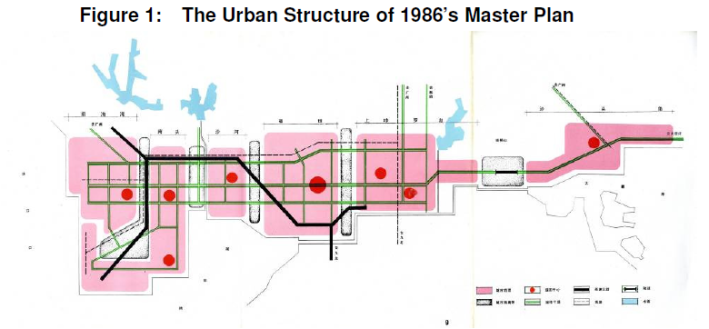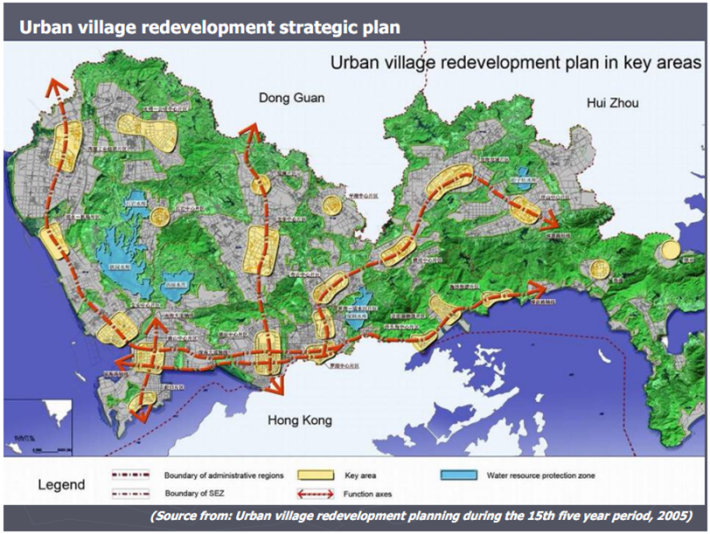RDC URBAN PLAN
The Philosophical Views Of Robin Hood Philosophy
ROBIN HOOD
When someone utters the name: Robin Hood and almost immediately people will conjure up images of the green-clad archer of Sherwood Forest, or the noble robber who steals from the rich to give to the poor, and in a deeper sense, a man who will stand up to injustice and tyranny during the period that historians classify as the Middle Ages. Robin Hood is looked at by many as a hero. When taking a look at this idea through a philosophical point of view, there are more things to consider. Should people actually regard him as a hero? If so, don't we have some sort of a responsibility as a society to look upon people who steal no matter what the reason for their actions may be as nothing more than a thief who is blight on society? On the flip side, is it acceptable to consider him a hero because he is helping those who are deemed less fortunate in society and therefore making society better as a whole? Upon using the ideas of Mills, and Kant it is this authors opinion that indeed Robin Hood though his actions aren't the most morally ideal, he is breaking laws that ultimately were made by rich men and done so to most of the time to protect themselves and their fortune. Philosophically speaking, what Robin Hood did was help the greater good of many at the expense of a few and as a result society as a whole improved.
MOBUTU SESE SEKO
In the beginning his country stood still, then as the infrastructure left by the Belgians in 1960 after independence began to crumble from neglect, Zaire began slowly to implode. In the end the Zairean state was just Mobutu; and its gross national product was just pocket money for him and a vast network of cronies. President Mobutu turned the country into a gangsters' paradise where only those in the mob could prosper. He kept friends close and enemies even closer. All patronage eventually flowed from him.
This year’s 52th anniversary of Mobutu’s ascent to the presidency of Congo will be no cause for celebration. Congo had just emerged from the catastrophe of Belgian rule: King Leopold II, arguably the most egregious of all colonialists, turned it into a personal fiefdom, killing and enslaving the population to enrich himself with ivory and rubber. But when the CIA helped Belgium assassinate independence prime minister Patrice Lumumba, opportunity knocked for Joseph Desire Mobutu, who had worked as a reporter and editor before returning to the army and climbing the ranks.
In 1963 he was invited by president John F Kennedy to the White House and effectively recruited to the capitalist side in the cold war’s African battleground. Two years later he declared himself head of state, renamed his country Zaire, renamed himself Mobutu Sese Seko Koko Ngbendu wa za Banga (meaning “the all-powerful warrior who, because of endurance and an inflexible will to win, will go from conquest to conquest leaving fire in his wake”) and adopted his infamous leopard-skin hat.
The end of the cold war had left Mobutu living on borrowed time and, suffering from prostate cancer, he fled the country when Kabila’s troops marched a thousand miles to Kinshasa, the capital, in 1997. He died in Morocco shortly after, aged 66.
WHERE ARE THE 8,1 MILLARDS FROM THE CONGO- ZAIRE RESSOURCES?.
In brief
By 1998 some $650 million in frozen Swiss bank deposits of the late Philippines dictator Ferdinand Marcos, who is thought to have amassed a fortune of $5-10 billion during his 20 years in power, had been handed over to the government in Manila.
In June the Swiss government extended a freeze for three months on bank accounts linked to former Haitian dictator Jean-Claude "Baby Doc" Duvalier.
The decision came days before a freeze on all the ex-president's Swiss accounts was due to expire, which could have allowed the money to be returned to the Duvalier family.
In June the Swiss government extended a freeze for three months on bank accounts linked to former Haitian dictator Jean-Claude "Baby Doc" Duvalier.
The decision came days before a freeze on all the ex-president's Swiss accounts was due to expire, which could have allowed the money to be returned to the Duvalier family.
Key facts
1997: Government of the Democratic Republic of Congo requests legal assistance from Switzerland to trace alleged assets of toppled dictator Mobutu.
1997: Swiss government freezes assets worth SFr10 million deposited by Mobutu and his family.
2001: Canton Vaud approves claims by Swiss businessman from Mobutu funds for outstanding bills, but government blocks the payout.
2001: Mobutu's villa on Lake Geneva auctioned off for SFr3.1 million.
2003: Government confirms freeze of Mobutu assets.
2006: Federal Court orders partial unfreeze of assets and payment of SFr2.35 million to Swiss businessman.
1997: Swiss government freezes assets worth SFr10 million deposited by Mobutu and his family.
2001: Canton Vaud approves claims by Swiss businessman from Mobutu funds for outstanding bills, but government blocks the payout.
2001: Mobutu's villa on Lake Geneva auctioned off for SFr3.1 million.
2003: Government confirms freeze of Mobutu assets.
2006: Federal Court orders partial unfreeze of assets and payment of SFr2.35 million to Swiss businessman.
Mobutu
In 1965 General Mobutu Sese Seko came to power in Congo, a Belgian colony until 1960, in a coup and renamed the country Zaire in 1971.
After decades of dictatorship, Mobutu was ousted by the alliance under Laurent-Désiré Kabila who proclaimed himself president of the Democratic Republic of Congo in 1997.
Zaire's new rulers accused Mobutu, who was forced into exile in Morocco where he died shortly afterwards, of siphoning off government funds and stashing away assets worth billions of francs in Switzerland.
When Kabila died in 2001 he was succeeded by his son, Joseph Kabila.
In response to a request for legal assistance by Kinshasa in 1997, the Swiss authorities froze SFr10 million deposited by Mobutu and his family. They also auctioned off Mobutu's villa on Lake Geneva for an additional SFr3.1 million in 2001.
After decades of dictatorship, Mobutu was ousted by the alliance under Laurent-Désiré Kabila who proclaimed himself president of the Democratic Republic of Congo in 1997.
Zaire's new rulers accused Mobutu, who was forced into exile in Morocco where he died shortly afterwards, of siphoning off government funds and stashing away assets worth billions of francs in Switzerland.
When Kabila died in 2001 he was succeeded by his son, Joseph Kabila.
In response to a request for legal assistance by Kinshasa in 1997, the Swiss authorities froze SFr10 million deposited by Mobutu and his family. They also auctioned off Mobutu's villa on Lake Geneva for an additional SFr3.1 million in 2001.
Congo Government Debt to GDP
Congo recorded a government debt equivalent to 117.70 percent of the country's Gross Domestic Product in 2017. Government Debt to GDP in Congo averaged 104.85 percent from 2000 until 2017, reaching an all time high of 204.40 percent in 2003 and a record low of 22.20 percent in 2010.
| Congo Government | Last | Previous | Highest | Lowest | Unit | |
|---|---|---|---|---|---|---|
| Government Debt to GDP | 117.70 | 115.00 | 204.40 | 22.20 | percent | [+] |
| Government Budget | -1.60 | -0.10 | 26.10 | -19.65 | percent of GDP | [+] |
| Military Expenditure | 503.00 | 491.00 | 503.00 | 21.00 | USD Million | [+] |
| Government Budget Value | 17889.81 | -51539.07 | 202341.00 | -192333.48 | CDF Million | [+] |
| Government Revenues | 439591.44 | 558757.15 | 590355.50 | 87123.86 | CDF Million | [+] |
| Fiscal Expenditure | 421701.63 | 610296.22 | 610296.22 | 85917.78 | CDF Million | [+] |
| Credit Rating | 25.00 | [+] | ||||
Congo Government Debt to GDP
Generally, Government debt as a percent of GDP is used by investors to measure a country ability to make future payments on its debt, thus affecting the country borrowing costs and government bond yields. This page provides - Congo Government Debt To GDP - actual values, historical data, forecast, chart, statistics, economic calendar and news. Congo Government Debt to GDP - actual data, historical chart and calendar of releases - was last updated on April of 2018.
| Actual | Previous | Highest | Lowest | Dates | Unit | Frequency | ||
|---|---|---|---|---|---|---|---|---|
| 117.70 | 115.00 | 204.40 | 22.20 | 2000 - 2017 | percent | Yearly |
DR Congo - External Debt
Revised data show that the Congolese economy expanded 3.7% in the year 2017, an acceleration from 2016’s print. Nevertheless, the economy has still not reached the rates of growth it recorded during the commodities super cycle but did exceed the Central Bank’s estimates due to higher prices and demand for Congolese commodities. While a favorable external outlook continues to bode well for the mineral-rich country, the overall economic outlook is becoming more uncertain. President Kabila is set to sign into law a highly-controversial mining code despite strong opposition from businesses. Additionally, opposition political parties in the country endorsed a single candidate for the delayed presidential elections last scheduled for December 2017; the electoral process has been mired by violence and civil unrest and elections have been postponed multiple times.
LES^SENCE
I review the recent literature on satisfaction and happiness, identify some plausible next steps to take at the frontiers of the research field and offer some suggestions to facilitate those steps. Using partial correlation techniques, substantial levels of covariation are found among the variables that are used in predictions of satisfaction and happiness with life as a whole from satisfaction with specific domains (e.g. family life, health). Using path analysis, confirmation is found in a dozen domains for a model which has satisfaction as a function of a perceived goal-achievement gap, and the latter as a function of comparisons with previous best experience and the status of average folks. Using discriminant analysis, satisfaction with family life is found to be a powerful and predominant discriminator among three groups, identified as Frustrated (dissatisfied and unhappy), Resigned (satisfied and unhappy) and Achievers (satisfied and happy).
Urban plan Shenzen Experiment
We will be starting a new monthly profile of cities around the world that have experienced unprecedented growth. Hopefully this will give insight into some of the massive challenges that planners and governments face in accommodating this growth and what some of these plans (or lack thereof) have produced.
This month we will take a look at Shenzhen, China. Known as the “instant city”, Shenzhen is a major urban area of almost 10 million people in China’s Guangdong Province, situated immediately north of Hong Kong. Owing to China’s economic liberalization, the area became China’s first – and arguably most successful – Special Economic Zone. Since the establishment of the Special Economic Zone in the late 1970’s, Shenzhen has seen unprecedented growth from a village of 30,000 to a city of over 325 times that.The small fishing village of Shenzhen was singled out in the 1979 to be one of the first Special Economic Zones (SEZ) under the leadership of Deng Xiaoping, the “father of modern China”. Since Shenzhen is so close to the then rapidly growing Hong Kong, the SEZ was meant to be an experimental ground for development. The idea was that Shenzhen would be able to provide cheaper labor and land that could accommodate the private sector looking to expand their Hong Kong operations. This concept proved extremely successful. Through strong government planning and infrastructural development Shenzhen saw an average annual population growth around 30% for the next 3 decades. This was unequalled almost anywhere in the world. In 2007, it had a GDP of almost $100 billion dollars, ranking it fourth among all Chinese cities, and Shenzhen’s GDP per capita surpassed $10,000, the first Chinese city to do so. Shenzhen is also known as one of the cleanest large Chinese cities with over 50% of streets lined with trees and large parks and green spaces available to its residents.
However for a city that experienced the type of rapid growth, it was very fortunate to have had forward thinking city officials and planners to help manage its success. Shenzhen officials remarkably were able to implement a total of three master plans within the span of 25 years; each adding to the fuel and direction of growth.
The first master plan of 1986 put in six “cluster cities” that concentrated growth and infrastructure along three highways. In the ten years to follow this, unprecedented growth and lack of zoning controls lead to major urban sprawl in Shenzhen. By 1996, the urban sprawl that had started only 17 years previously covered over 645 sq. kilometers of land, the same size as 11 islands of Manhattan. Shenzhen was slowly running out of land and most of the structures being built were low-density manufacturing and housing units. City planners were also concerned about livability and taking a page from more developed nations, created a new 1000 sq. kilometer growth boundary; the first of its kind in China. “Periphery growth clusters” were also implemented around the existing six “cluster cities” to encourage growth and greater density while even more infrastructure, highways and a massive subway system began construction.
This month we will take a look at Shenzhen, China. Known as the “instant city”, Shenzhen is a major urban area of almost 10 million people in China’s Guangdong Province, situated immediately north of Hong Kong. Owing to China’s economic liberalization, the area became China’s first – and arguably most successful – Special Economic Zone. Since the establishment of the Special Economic Zone in the late 1970’s, Shenzhen has seen unprecedented growth from a village of 30,000 to a city of over 325 times that.The small fishing village of Shenzhen was singled out in the 1979 to be one of the first Special Economic Zones (SEZ) under the leadership of Deng Xiaoping, the “father of modern China”. Since Shenzhen is so close to the then rapidly growing Hong Kong, the SEZ was meant to be an experimental ground for development. The idea was that Shenzhen would be able to provide cheaper labor and land that could accommodate the private sector looking to expand their Hong Kong operations. This concept proved extremely successful. Through strong government planning and infrastructural development Shenzhen saw an average annual population growth around 30% for the next 3 decades. This was unequalled almost anywhere in the world. In 2007, it had a GDP of almost $100 billion dollars, ranking it fourth among all Chinese cities, and Shenzhen’s GDP per capita surpassed $10,000, the first Chinese city to do so. Shenzhen is also known as one of the cleanest large Chinese cities with over 50% of streets lined with trees and large parks and green spaces available to its residents.
However for a city that experienced the type of rapid growth, it was very fortunate to have had forward thinking city officials and planners to help manage its success. Shenzhen officials remarkably were able to implement a total of three master plans within the span of 25 years; each adding to the fuel and direction of growth.
The first master plan of 1986 put in six “cluster cities” that concentrated growth and infrastructure along three highways. In the ten years to follow this, unprecedented growth and lack of zoning controls lead to major urban sprawl in Shenzhen. By 1996, the urban sprawl that had started only 17 years previously covered over 645 sq. kilometers of land, the same size as 11 islands of Manhattan. Shenzhen was slowly running out of land and most of the structures being built were low-density manufacturing and housing units. City planners were also concerned about livability and taking a page from more developed nations, created a new 1000 sq. kilometer growth boundary; the first of its kind in China. “Periphery growth clusters” were also implemented around the existing six “cluster cities” to encourage growth and greater density while even more infrastructure, highways and a massive subway system began construction.
By the mid 2000’s when a third master plan was being drawn up; planners faced another dilemma entirely. The amount of space that could actually be used for development was dwindling, and quickly. Only about 100 sq. kilometers of legally developable land was left, and officials feared that without more space that the economic engine of Shenzhen would come to a halt. Officials were faced with a hard choice. Instead of diminishing the green growth boundary, Chinese officials designated more than 200 square kilometers of occupied land as “urban regeneration areas”. The idea was to clear dilapidated low-density buildings and properties to build newer, higher density facilities. The government opted to buy back occupied land from private stakeholders and would then build new facilities themselves or give large plots back to developers. This plan was reinforced by stricter building codes that encouraged higher density industries and residential buildings. This tactic proved to be successful; Shenzhen has added almost 3 million people since the last master plan was put in place.
COMMUNITY IMPACT FOUND GIVING CAMPAIGN.
You’re a change-maker.
You believe in our community and you want to help make it better.
We get it. We’re with you.
As a Community Foundation we spend every day working to improve the lives of everyone in All Countries, and our true brilliance and success lies in our ability to leverage the giving of many to make the greatest possible impact.
Together, we can create transformative change.
Giving to the Community Impact Fund:
This comprehensive, flexible fund addresses a broad range of needs, including future needs that often cannot be anticipated at the time of your gift.
The Community Impact Fund helps the community:Support long-term solutions.
Respond quickly to community emergencies. Meet changing social, cultural, educational and environmental needs. Distributions from the Community Impact Fund also support the Community Impact competitive grantmaking process.
A Community Leadership Committee made up of community members, board and staff review grant proposals submitted by area nonprofits and select projects that demonstrate long-term commitment to three priority areas:
The Community Impact Fund also helps the Community Foundation of Greater Dubuque to drive positive change through civic dialogue and promoting effective strategies for community collaboration. We call this “collective impact”—encouraging collaboration and building partnerships to identify our community’s critical challenges and create the change our community needs. Our partners include nonprofits, donors, government leaders, business people, faith-based organizations – all of whom care deeply about improving the quality of life in our region.
You’re a change-maker.
You believe in our community and you want to help make it better.
We get it. We’re with you.
As a Community Foundation we spend every day working to improve the lives of everyone in All Countries, and our true brilliance and success lies in our ability to leverage the giving of many to make the greatest possible impact.
Together, we can create transformative change.
Giving to the Community Impact Fund:
This comprehensive, flexible fund addresses a broad range of needs, including future needs that often cannot be anticipated at the time of your gift.
The Community Impact Fund helps the community:Support long-term solutions.
Respond quickly to community emergencies. Meet changing social, cultural, educational and environmental needs. Distributions from the Community Impact Fund also support the Community Impact competitive grantmaking process.
A Community Leadership Committee made up of community members, board and staff review grant proposals submitted by area nonprofits and select projects that demonstrate long-term commitment to three priority areas:
Strong Nonprofits: Proposals that build capacity to meet community needs, create collective impact, and ensure collaborative data and investment in leadership.
Thriving Families: Proposals that build increased self-sufficiency, create success in the lives of young people, and ensure lasting commitment to healthy neighborhoods
Vibrant Culture: Proposals that build appreciation for the arts, create opportunities for increased social offerings, and ensure openness to a growing diverse population.
The Community Impact Fund also helps the Community Foundation of Greater Dubuque to drive positive change through civic dialogue and promoting effective strategies for community collaboration. We call this “collective impact”—encouraging collaboration and building partnerships to identify our community’s critical challenges and create the change our community needs. Our partners include nonprofits, donors, government leaders, business people, faith-based organizations – all of whom care deeply about improving the quality of life in our region.
LES^SENCE SATISFICATION OF HAPPPINES URBAN PLAN {CONGO ZAIRE}.
Structural Points.
1- VIADUCT CONSTRUCTION inspired by {VIADUCKT -ZÜRICH SWISS}.
2- ETHICS URBAN PLAN inspired by {MARAGALL -BARCELONA}.
3- REDBULL SPORT CAMPUS. inspired by {U.S.A SPORT TALENT CAMPUS}.
4- NELSON MANDELA CULTURE CENTER inspired by { KOSMOS - ZÜRICH}.
5- U.S.A ARMY BASE inspired by China Architecture.
6- GREEN BOONS - PARKS -COMMERCE - FLUSING SCHOOLS inspired by { amsterdam}
7- DOWNHILL FORCE DISTRICT. inspired by { Buffer Zone}.
8- AFRO TOWN SUSTAINABLE COMERCE. Inspired by { CHINA TOWN}.
9- IMPACT HUB COMPLEX inspired by { IMPACT HUB ZÜRICH}.
0- ENERGY RENOVABLE GARBEG INDUSTRY inspired by { zürich First europe Industry}.
1- GREEN LABEL. inspirred by ( Trump constructions}
1- GREEN LABEL. inspirred by ( Trump constructions}
Stucturals Pictures Points.
5-U.S.A ARMY BASE
1- VIADUCT CONSTRUCTION.
2- ETHICS URBAN PLAN.
3- REDBULL SPORT CAMPUS
4- NELSON MANDELA CULTURE CENTER.
6- GREEN BOONS PlANTAGE.
6-1 GREEN BOONS PARKS.
6-2 GREEN BOONS COMMERCE.
7- DOWNHILL FORCE DISTRIC.
7-1 DOWNHIILL FORCE DISTRIC FLUSING SCHOOLL

8- AFRO TOWNS SUSTAINABLE COMMERCE.

9- IMPACT HUB CONO- ZAIRE

10- ENERGY RENOVABLE GARBEG INDUSTRY

10.1 ENERGY RENOVABLE GARBEG INDUSTRY

11- GREEN LABEL CONSTRUCTIONS

LES^SENCE SUSTAINABLE SWISS GROUP.
Angel Bashile needs your help in restoring FORCE support for democracy in Congo - Zaire. Our work amplifies voices calling for freedom and empowers human rights defenders and civic activist to advance democratic change. Please support our mission by making a gift today.
We are planning a Foundrising Campaign for the regeneration of Congo-Zaire & Africa with a sustainable finance plan if you like support our project just talk about it.
The Kids.
8- AFRO TOWNS SUSTAINABLE COMMERCE.

9- IMPACT HUB CONO- ZAIRE

10- ENERGY RENOVABLE GARBEG INDUSTRY

10.1 ENERGY RENOVABLE GARBEG INDUSTRY
11- GREEN LABEL CONSTRUCTIONS
LES^SENCE SUSTAINABLE SWISS GROUP.
Angel Bashile needs your help in restoring FORCE support for democracy in Congo - Zaire. Our work amplifies voices calling for freedom and empowers human rights defenders and civic activist to advance democratic change. Please support our mission by making a gift today.
We are planning a Foundrising Campaign for the regeneration of Congo-Zaire & Africa with a sustainable finance plan if you like support our project just talk about it.
The Kids.











Kommentare
Kommentar veröffentlichen